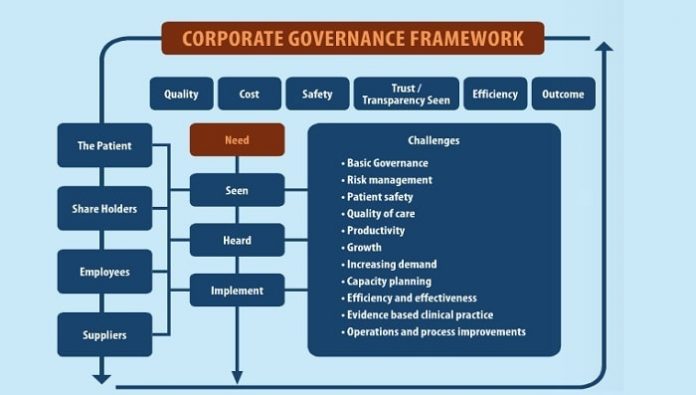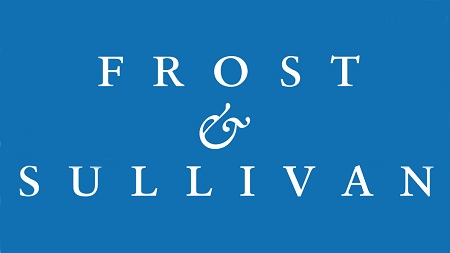The era of globalization has begun to reflect in the management of family owned hospitals. The entrance of corporate governance in the functioning of these hospitals, apart from strategizing the growth, also leads to more organized ways and means of lending services for the betterment of the people
Various new developments are constantly taking place in the Healthcare industry and competition for international and domestic investment in this sector is also growing. Hence, organizations, healthcare administrators, and policy makers are increasingly challenged to reflect on the importance of good corporate governance and how they can implement it in the healthcare system.
In India, family-owned hospitals form a major component of the healthcare delivery mechanism and cannot be underestimated due to their impact on the overall healthcare delivery system and well-being of people. However, due to uncertainties of the present economic scenario, it is necessary to develop a governance system for family-run hospitals in order to provide tangible benefits to the patients, stakeholders, various healthcare providers, and businesses. It will help family-run hospitals to be competitive, more viable and effective organizations, and more growth-oriented sustainable corporations.
What is Corporate Governance?
Corporate governance is about how companies or organizations are controlled. It is concerned with striking the balance between social and economic goals, and between individual and community goals. The corporate governance process is implemented to ensure that the management and business of the entities is conducted in line with highest standards of ethics and efficacy, assuming the best option to safeguard stakeholders’ interest.
Need for Corporate Governance in Family-run Hospitals
Increasing expectations of patients, increasing competition from different healthcare players, changing perceptions of stakeholders, and development of new technologies have created an urgent need to implement corporate governance in family-run hospitals. Most family-run hospitals eventually close down or are taken over by Corporates. Many family-run hospitals are supposed to be managed by the fourth or fifth generation, who do not want to take the responsibility due to their own career plans in other fields. Corporate governance is required in family-run hospitals to bring transparency, focus on sound patient care, accountability, team and leadership building, cost control, latest technology implementation, and adoption of best practices. These can be achieved keeping in mind the expenses and investment guidelines of the organizations.
Transformation Stage – Shift from Family-run to Corporate Style or Corporate Hospital
Before understanding the dynamics and frame of corporate governance in family-run hospitals, the following key questions need to be asked.
Overall perspective of the hospital’s key decision makers
- Has our Board understood its changing role in the context of corporate transformation?
- How well is the organization positioned to go ahead with the right skills, competition, various committees, and decision-making team structure?
- Are there changes to be made within the organization and in liaison with other healthcare providers to achieve more efficiencies and organizational growth?
- What can the organization do to further support the payers, stakeholders, employees, and service providers within the community to ensure all are committing best practices?
- What will the entire transformation mean to the community, employees, stakeholders, etc, and what will be the engagement process implemented for external and internal customers?
- How confident is the organization? Are the clinicians performing the right procedures in line with evidence-based best practices (both existing and emerging)?
- Is there a strong mechanism in place to ensure exchange of ideas, viewpoints, and have insightful discussions with the management, stakeholders, clinicians, employees, patients, etc?
- Are the patients’ needs and clinical outcomes top priority across the organization? Does the organization have a strong mechanism to track all quality indicators?
Conceptual Frameworks of Corporate Governance in Family-run Hospitals
To answer the above-mentioned questions, a conceptual delivery model is formed to implement good corporate governance in family-run hospitals. Family-run hospitals in India (small, mid-sized or large hospitals) are undergoing a major transformation and are in the process of adopting strong corporate governance models to stay ahead of the competition. Some of the challenges faced by hospitals in adopting corporate governance are:
Governance beyond basics: The Board has to ensure that all the skills and competencies needed to implement the corporate governance framework are in place. Understanding the crisis: Members of the Board have to prepare according to the current economic circumstances. The impact of investment has to be calculated in advance ensuring that the risk of failure is managed.
Efficiency: The top management has to focus on cost-saving exercises with emphasis laid on revenue cycle management. Priority areas like employees, service mix, clinicians, drugs, and consumables can be reworked to achieve the long-term vision and objective of the organization.
Risk management: In family-run hospitals, the responsibility of overall organization performance lies majorly on the Board. Hence, good corporate governance helps estimate the risks involved due to effective oversight and internal control by the Board members. Quality, productivity and safety: The management’s responsibility is to implement quality initiatives and processes to increase productivity and safety of the patients.
Transparency and trust: Transparency and trust are the two important pillars responsible for overall growth of any organization. The Board will have to work together to build a strong relationship with the corporate governance body, knowing that the effort in building both trust and transparency will be an important success factor.
Best clinical practices: A workforce model to support the adoption of best clinical practices performed in emerging and developed healthcare facilities should be implemented. The senior management of the hospital should track all the applicable clinical indicators for future references. There should be a clinical committee to govern the same, which would also be responsible for the clinical outcomes in the hospital. The committee would also ensure the implementation and execution of the best practices, concentrating on the very critical component of the delivery cycle, i.e. re-look the entire clinician engagement model. Support from clinicians, technical staff, and management will help to implement best practices in the hospital and to market the best clinical and corporate governance hospital.
Change management: This is one of the major components to develop leadership within the organization. These leaders are responsible for change in the processes and framework, which lead towards the betterment of the family-run hospital. There should be a commonly-shared vision within the clinical and management team to make the change management process swift in the hospital.
Family-Run Hospital: “Corporate Governance one-stop solution”
Introduction of corporate governance in majority of the family-run hospitals will attract more patients due to improved clinical outcomes and services. It will attract more clinical talent due to the strong clinician engagement model, and more investment due to trust and transparency followed within the organization. It will attract non-clinical talents due to high brand image and retention power. It will also attract more suppliers willing to offer better prices due to transparent supply chain management.
There are multiple aspects of corporate governance in family-run hospitals
It’s all in the mindset: Before introduction and at the time of implementing corporate governance, all the stakeholders like shareholders, employees, clinicians, suppliers, etc, should be very well informed about the structure and should have a clear-cut sense of responsibility and accountability regarding each department.
Cost control models: The top management should implement cost saving models in various segments of the hospitals, like the introduction of a cost-effective supply chain management system, bulk purchases of drugs and consumables to get a better price. Strong control on pilferage level within the organization, formulation, pharmaceutical and therapeutic drug committee will help govern the type of medicines and consumables used and purchased by clinicians and the material department. Periodic stock audit will help the organization to save a lot of costs in terms of identifying slow and fast-moving materials within the organization.
Information Technology: Driver for change: Introduction of the right information technology at various levels in the hospital will ensure transparency and smooth management of different departments in the hospital. There is an increase in the adoption of Information Technology such as hospital information systems and other clinical applications like Picture Archiving and Communication System (PACS), Radiology Information System, (RIS), Clinical Applications etc. which facilitates quick and precise disease diagnosis and fast data retrieval.
Better care with best profits: Along with good infrastructure, good clinicians and best technology, it is very important to have patient-oriented service delivery programs and the implementation of best practices in all the clinical as well as non-clinical areas of the hospital.. This will work as a parallel support in faster recovery of the patients. Also, reduction in average length of stay with best clinical outcome, bundled with good service to the patient, will add up in the top-line of overall growth of the organization.
Advantages of Corporate Governance in Family-run Hospitals
Following are some of the key advantages of corporate governance:
Image builder: Corporate governance acts as an image builder for a hospital, as people associate this with better management, streamlined processes, and hassle-free treatment.
Credibility: Corporate governance runs on an open platform, i.e. the financial result of each year is publically posted. Hence, the trust level of investors and general masses is also with the facility.
Accountability: Corporate governance is based on the best practices in a particular business domain. It results in regular audits and quality initiatives, thereby reducing wastage of resources and resulting in better control and better profit margins.
Better Growth Prospects: Corporate governance is run by various stakeholders and the financial results are declared transparently. Therefore, if a business unit makes profit, there is an increase in the number of stakeholders inclined to invest their money in the projects. This increases the options for the organization to opt for organic or inorganic expansion.
Investor’s choice: In corporate governance, it is fundamental to keep the investors informed about decisions made by the Board. This makes the investors feel safe. Most hospitals find it difficult to arrange funds at the time of expansion, as they do not follow corporate governance until the eleventh hour, which leads to an increase in the cost of operation.
All-round productivity: Corporate governance is not only concerned about the profit of the organization, but also about the employees. As the best practices are adopted, employees are trained in the best environment, with best facilities and best industry remuneration.
Moving forward
In India, where healthcare is supposed to be one of the most important aspects of one’s life, it is important to appreciate and realize that good governance is very important not only for the organization’s sustainable growth, but also to maintain community trust. In the coming years, majority of family-run hospitals will adopt good corporate governance models to sustain themselves and for the growth of their stakeholders, patients, employees, clinicians, suppliers, and the community at large.





















